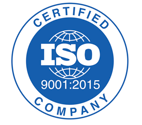How to Implement Continuous Improvement on the Manufacturing Floor
With the ever-increasing demands and pressures from Executive Leadership Teams within the pharmaceutical and medical device arena, sitting back and just accepting the status quo is not an option. Leaders within the manufacturing function of pharmaceutical and medical device companies need to be constantly striving to improve the manufacturing process. This improvement can come in many different forms including efficiency, quality, and overall culture. While there are certainly very specific actions that can bring about positive change, here are 5 overarching recommendations that should be followed:
1. Study Kaizen
Kaizen (which is a Japanese word meaning “change for better”) refers to a philosophy or process which aims to eliminate waste and engage all levels in an organization in a daily pursuit of small ideas which can be implemented quickly and bring about substantial improvement over time. The Kaizen methodology has become increasingly popular throughout the world, involving collaborative input from the CEO all the way down to the building maintenance employees. On top of the vast enhancements to your manufacturing process, the impact on employee morale can be tremendous… and if your people feel happy and empowered, their productivity should skyrocket! To get some more specifics, check out Kaizen guide books (here’s just one of many good book lists), or start by reading this interesting article from Quality Digest. If it’s something you want to pursue, you’ll want to look into bringing in some outside experts to provide some training and get you started.
2. Assess Your Performance
It’s difficult to implement improvements, and then measure the impact of such improvements, if you don’t know how you’re performing. Constant self-evaluation is essential in a manufacturing environment. Bring together the key members of your team to assess your current metrics and brainstorm new metrics to ensure a meaningful evaluation. Reporting on metrics should be a formal process, at least monthly, where individuals are given clear, measurable goals. Also, don’t be afraid to reach out to peers in the industry, or participate in industry forums or surveys, to get their thoughts on how they assess performance and to see how you measure up to others. You will find that people are typically very willing to share their experiences both in terms of what worked and what didn’t work -- particularly if you return the favor!
3. Evaluate Your Team
Even with the best manufacturing processes in place and the best methodologies being utilized, you’re only as good as your people. Having the right people with the right skill sets matched with the right responsibilities is an absolute must in order to drive improvement on the manufacturing floor. Conduct a 360-degree talent assessment, preferably on an annual basis, to give yourself insight into the capabilities and limitations of your team. Perhaps you can use some more individuals who are Six Sigma certified to maximize productivity. You’ll likely find that some team members are better suited for a different role or perhaps some should be terminated due to insufficient technical knowledge, inadequate soft skills, or lack of motivation and attention to detail. You may also discover that your internal team needs to be supplemented with external resources who can provide expertise or simply more arms and legs to tackle new projects.
4. Train Your Staff
Even the most talented people on your team need to receive sufficient training to ensure their skills stay sharp and they remain up-to-date on the latest trends and best practices in the industry. Providing your people with Kaizen training, Six Sigma training, or training tailored to a very specific topic can prove very beneficial. In today’s environment of high focus on short-term earnings and close scrutiny on budgets, it’s often training that gets sacrificed. That can be dangerous. Leaders in the manufacturing function need to educate the company’s executives that an attempt to save a few bucks on the training budget can have disastrous consequences which can end up costing the company so much more in the long run -- not only in higher costs from fines, penalties, recalls and consent decrees, but also with respect to damaging your company’s reputation and credibility.
5. Incentivize Your People
Reviewing compensation structures, including annual bonus packages, to ensure alignment of goals can go a long way to ensuring overall success in your department. Are your people incentivized adequately to seek out and identify opportunities to improve processes? Let’s face it, many individuals’ natural tendency is to resist change, even positive change, so without the proper motivation, your team can become mired in stagnation. Don’t let that happen. Give out specific, measurable objectives with respect to the identification and implementation of enhancements and ensure that at least a portion of their annual bonus is tied directly to such objectives. Another effective way to reward your staff is to provide specific one-time recognition awards throughout the year to employees who have a noteworthy achievement in process improvement. Consider formally presenting such recognition awards with a note of gratitude. It will be greatly appreciated and keep them hungry for more!





